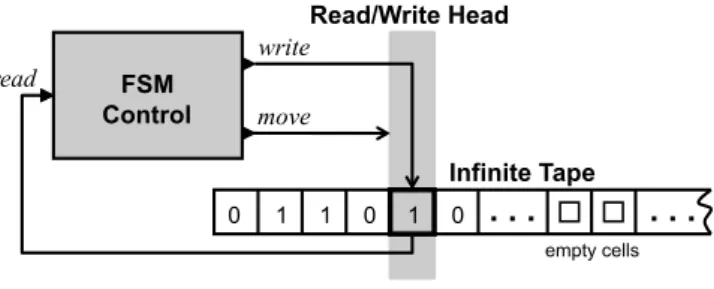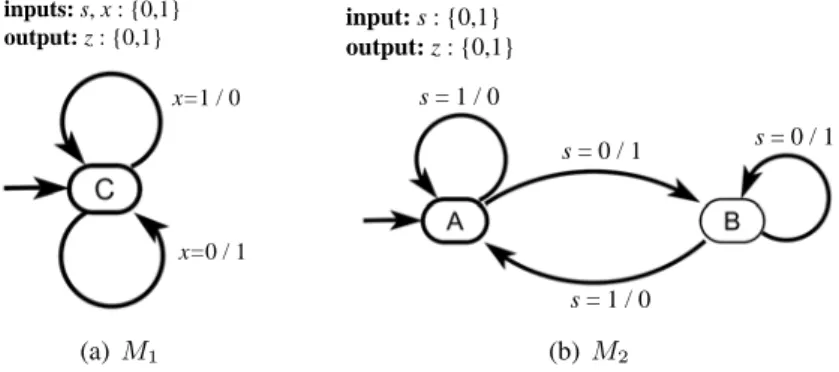The notion of attacker or adversary is central to the theory and practice of security and privacy. Another defining characteristic of the field of security and privacy is the specific properties it concerns. Security and privacy can only be guaranteed for a specific threat model and a specific set of features.
As a system designer, if security and privacy are important to you, you should do that first. In this chapter, we aim to provide you with a basic understanding of security and privacy, with a special focus on concepts relevant to designing cyber-physical systems. The field of security and privacy is too broad to be covered comprehensively in one chapter;
Cryptographic Primitives
Encryption and Decryption
One of the fundamental principles of cryptography, known as the Kerckhoff Principle, states that a cryptographic system (algorithm) must be secure even if everything about the system except the key is publicly known. Especially if Eve happens to learn one of the messages, she learns the other and can also recover the keyK. Note that for simplicity, this encryption model abstracts that it is (just) a function of message and key; in practice, care must be taken to use an appropriate block cipher method that does not, for example, always encrypt the same plaintext into the same ciphertext.
The basic version of DES involves the use of a 56-bit key and operates on 64-bit message blocks. For example, modular power is usually implemented using a version of the square-and-multiply technique described in Example 16.1 of Chapter 16. Second, the effectiveness of the approach depends critically on the infrastructure for storing and maintaining public keys.
Digital Signatures and Secure Hash Functions
Encryption: When Alice wants to send a message to Bob, she first gets his public key KB = (n, e). Without such a public key infrastructure, an attacker Eve could impersonate Bob, advertise her own public key as Bob's, and thereby fool Alice into sending her messages intended for Bob. Because of the cost of public-key cryptography, it is often used to exchange a shared symmetric key that is then used for all subsequent communications.
A digital signature is a cryptographic mechanism, based on public key cryptography, for the author of a digital document (message) to verify himself/herself to a third party and to provide assurance about the integrity of the document . Key Generation: This step is identical to the key generation phase of public key cryptosystems, resulting in a public key-private key pair. Recall from Section 17.1.1 that, using RSA, Bob can generate his public key asKB = (n, e) and private key kB =d.
Protocol and Network Security
Key Exchange
Note that they have not revealed any of the secret numbers to the attacker Eve. This question was studied in the early 2000s when the first work was done on deploying wireless sensor networks (see, for example, Perrig et al. One of the new ideas is to exploit timing properties of these networks, an idea of which the roots go back through Anderson et al. (1998).
The combination of the above two properties allows the use of a secure broadcast protocol called µTESLA (Perrig et al., 2002). For example, Halperin et al. (2008) discuss a key exchange scheme for implantable medical devices (IMDs) such as pacemakers and defibrillators. Halperin et al. (2008) show how implantable medical devices (IMDs) can be read and reprogrammed wirelessly.
Cryptographic Protocol Design
Software Security
Example 17.2: Sensors in certain embedded systems use communication protocols where data from various onboard sensors is read as a stream of bytes from a designated network port or socket. Then an attacker could provide more than 16 bytes and cause the program to write past the end of the array sensor data. In this case, a buffer overflow vulnerability can be exploited to overwrite the return address of the function and cause it to execute code of the attacker's choice.
It is possible for the return address of the function process sensor data to be stored in memory immediately after the end of the sensor data set. This version of buffer overflow exploitation is sometimes (and quite appropriately) called stack busting. One simple way is to explicitly check that we never write past the end of the buffer by keeping track of its length.
Information Flow
Examples
The take reading function takes a single blood glucose reading (eg in mg/dL) and stores it in a floating point variable reading. Finally, it transmits the value along with the patient ID without any encryption over the network to the hospital server for analysis by the patient's doctor. It is easy to see that it is not, since the read value is transmitted "in the clear" over the network.
Example 17.5: In this version of the read protection program, we use symmetric key cryptography denoted AES. While the above code fix blocks the flow of information about the patient's blood glucose reading, note that it does not fully protect the program. In particular, be aware that the patient ID is still being sent over the network.
Theory
For confidentiality, the high level indicates secret data/channels and the low level indicates public data/channels. For integrity, the high level indicates trusted data/channels while the low level indicates untrusted data/channels. Put another way, the low parts of a system's track are deterministic functions of the low initial state and the low inputs, and nothing else.
This means that an attacker who controls or observes only the lower parts of the system trace cannot infer anything about the higher parts. Another variant is generalized noninterference (McLean, 1996), which requires that the system exhibit a set of traces with a special property: for any two traces τ1 and τ2, there must be a newly constructed trace τ3 such that at each time step in τ3 , they are high inputs same as in τ1 and low inputs, states and outputs same as in τ2. Intuitively, by observing low states and outputs, an attacker cannot tell whether he sees high inputs as inside τ1 or as appearing in τ2.
Analysis and Enforcement
It can run statically when software is compiled, or dynamically at runtime. For example, for the code in Example 17.4, taint analysis can detect the flow of secret data from a reading network socket. At runtime, this can be detected before writing to the network socket and used to throw a runtime exception or other preemptive action.
Static spot analysis is a simple concept, and easy to apply, but can generate false alarms. Dynamic spot analysis is just as easy and more precise, but imposes an overhead time cost. The notion of pollution allows one to specify simple information flow policies, such as prohibiting the flow of secret data to any public location at all times.
Advanced Topics
Sensor and Actuator Security
First, such interference can be invasive, involving modification of the sensor components, or non-invasive, involving observation or remote injection of false values. These dimensions can be used to define informal threat models. 2013) describes a threat model for deliberate, low-impact, non-invasive attacks. Amplitude modulated attacks start with a carrier signal in the same frequency band on the sensor and modulate it with an attack signal.
Magnetic wheel speed sensors are attacked by placing a malicious actuator near the sensor (mounted externally to the vehicle) that modifies the magnetic field measured by the ABS sensor. A form of attack, in which the actuator disrupts the magnetic field but is not precisely controlled by the attacker, can be "merely" destructive. The most complicated form of attack is a spoof attack, where the ABS system is tricked into measuring a false but accurate wheel speed for one or more wheels.
Side-channel Attacks
Summary
The order of elements in the sequence matters, and is in fact captured by the natural order of the natural numbers. That is, f(x) is the size of the setx. b) The lifted version of the functionf in part (a) is writtenfˆ. Starting at the beginning of the list, compare the input to each entry in the list.
Start in the middle of the list and compare b with the entry(n/2) in the middle. The size of the memory required can be similarly characterized using big O notation, which gives some space complexity. Is there a function of the form f:W →Z for which there is no algorithm that can compute the function for all inputs.
Therefore, we next consider fundamental bounds for decision problems of the form:N→ {YES, NO}. A computer program is always represented as a member of the set {0,1}∗, i.e., the set of finite sequences of bits. Because the members of the set can be ordered in this way, the set {0,1}∗ is said to be countable or countably infinite.
In Figure B.1, the symbols on the non-empty cells of the band are drawn from the set Σ = {0,1}, the binary digits. The Turing machine starts in the initial state of the FSM with the read/write head on the left side of the tape. The control FSM of the Turing machine has two final states: an acceptance of state acceptance and a rejection of state rejection.
If the read/write head is above a cell containing 2, input to the subsequent port of the FSM will be absent. Since a Turing machine is a program, Proposition B.1 tells us that Turing machines are incapable of realizing all functions of the form f:N→ {accept,reject}. One of the first problems that have been shown to be undecidable is the so-called halting problem for Turing machines.
That is, a problemf is in NP if there is a non-deterministic Turing machineN that is a decision procedure forf, and for all inputsw ∈ W, each execution of the Turing machine has a time complexity no greater than O(nm), for some ∈N. H., 1975: A preliminary evaluation of the critical path method for scheduling tasks on multiprocessor systems.IEEE Transactions on Computers.


